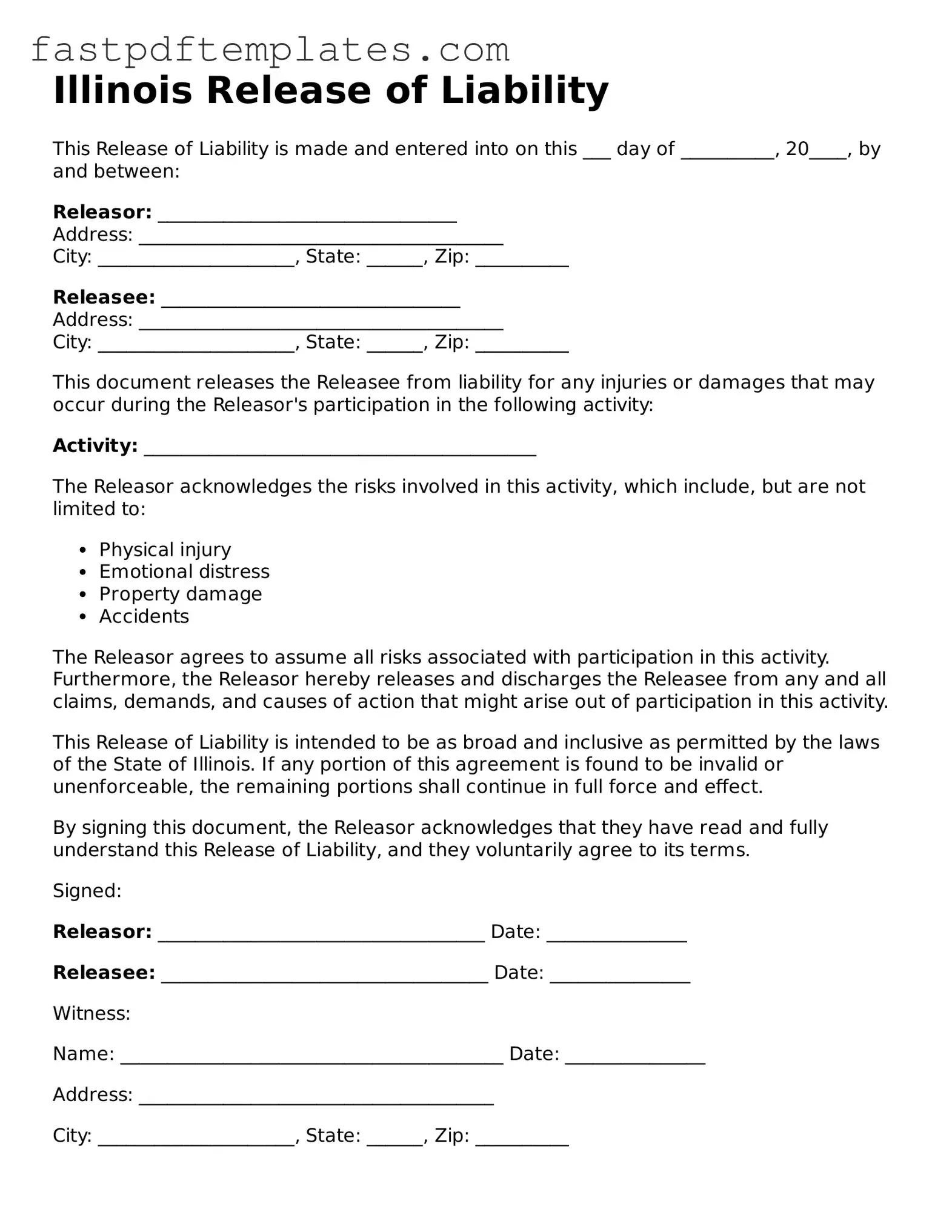Illinois Release of Liability
This Release of Liability is made and entered into on this ___ day of __________, 20____, by and between:
Releasor: ________________________________
Address: _______________________________________
City: _____________________, State: ______, Zip: __________
Releasee: ________________________________
Address: _______________________________________
City: _____________________, State: ______, Zip: __________
This document releases the Releasee from liability for any injuries or damages that may occur during the Releasor's participation in the following activity:
Activity: __________________________________________
The Releasor acknowledges the risks involved in this activity, which include, but are not limited to:
- Physical injury
- Emotional distress
- Property damage
- Accidents
The Releasor agrees to assume all risks associated with participation in this activity. Furthermore, the Releasor hereby releases and discharges the Releasee from any and all claims, demands, and causes of action that might arise out of participation in this activity.
This Release of Liability is intended to be as broad and inclusive as permitted by the laws of the State of Illinois. If any portion of this agreement is found to be invalid or unenforceable, the remaining portions shall continue in full force and effect.
By signing this document, the Releasor acknowledges that they have read and fully understand this Release of Liability, and they voluntarily agree to its terms.
Signed:
Releasor: ___________________________________ Date: _______________
Releasee: ___________________________________ Date: _______________
Witness:
Name: _________________________________________ Date: _______________
Address: ______________________________________
City: _____________________, State: ______, Zip: __________
